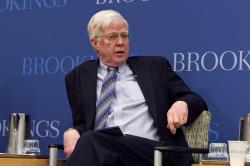Abstract
This paper describes an analysis of career earnings patterns developed for predicting the impact of Social Security reform. We produce estimates of age-earnings profiles of American men and women born between 1931 and 1960. The estimates are obtained using lifetime earnings records maintained by the Social Security Administration. We use a standard econometric approach to develop forecasts of future individual earnings, and we supplement these estimates by developing estimates of the shape and prevalence of nine stylized earnings patterns of U.S. workers. These two alternative approaches to estimating career earnings patterns have significant advantages over the traditional analytical approach of examining a small number of representative workers who are assumed to have steady earnings throughout their careers. Few workers have level career earnings, so the traditional approach to policy simulation represents a serious distortion of actual labor market experience. Moreover, differences in the pattern of career earnings can produce wide disparities in pension entitlements, even for workers with the same average earnings, under individual account and other retirement plans. Since defined-contribution pension plans are frequently proposed as a supplement or replacement for traditional Social Security, it is important that policy simulation be based on accurate representations of career earnings patterns.
I. Introduction
To evaluate the relationship between individual earnings and Social Security benefits and predict the distributional impact of Social Security reform, analysts have traditionally relied on policy simulations covering a handful of representative workers. The Social Security benefit formula is extremely complicated. Before the introduction of inexpensive electronic computation, it was not feasible to examine the detailed effects of reform on large numbers of individual workers. Even after the price of computation fell dramatically, however, analysts and policymakers often found it easier to understand the impact of reform by examining the effects on three or four representative workers rather than thousands of workers whose earnings patterns span the actual experiences of the U.S. workforce.




